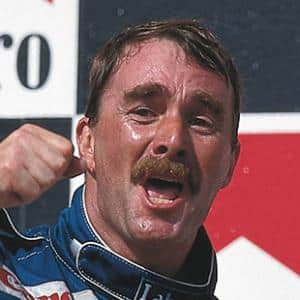Andretti vs Mansell: the 1993 IndyCar team-mates who couldn’t get along
Thirty years ago the reigning Formula 1 world champion Nigel Mansell departed Williams for a Wild West adventure. But as Preston Lerner reveals, the IndyCar Newman/Haas dream team of ‘Our Nige’ and Mario Andretti didn’t turn out quite as planned...
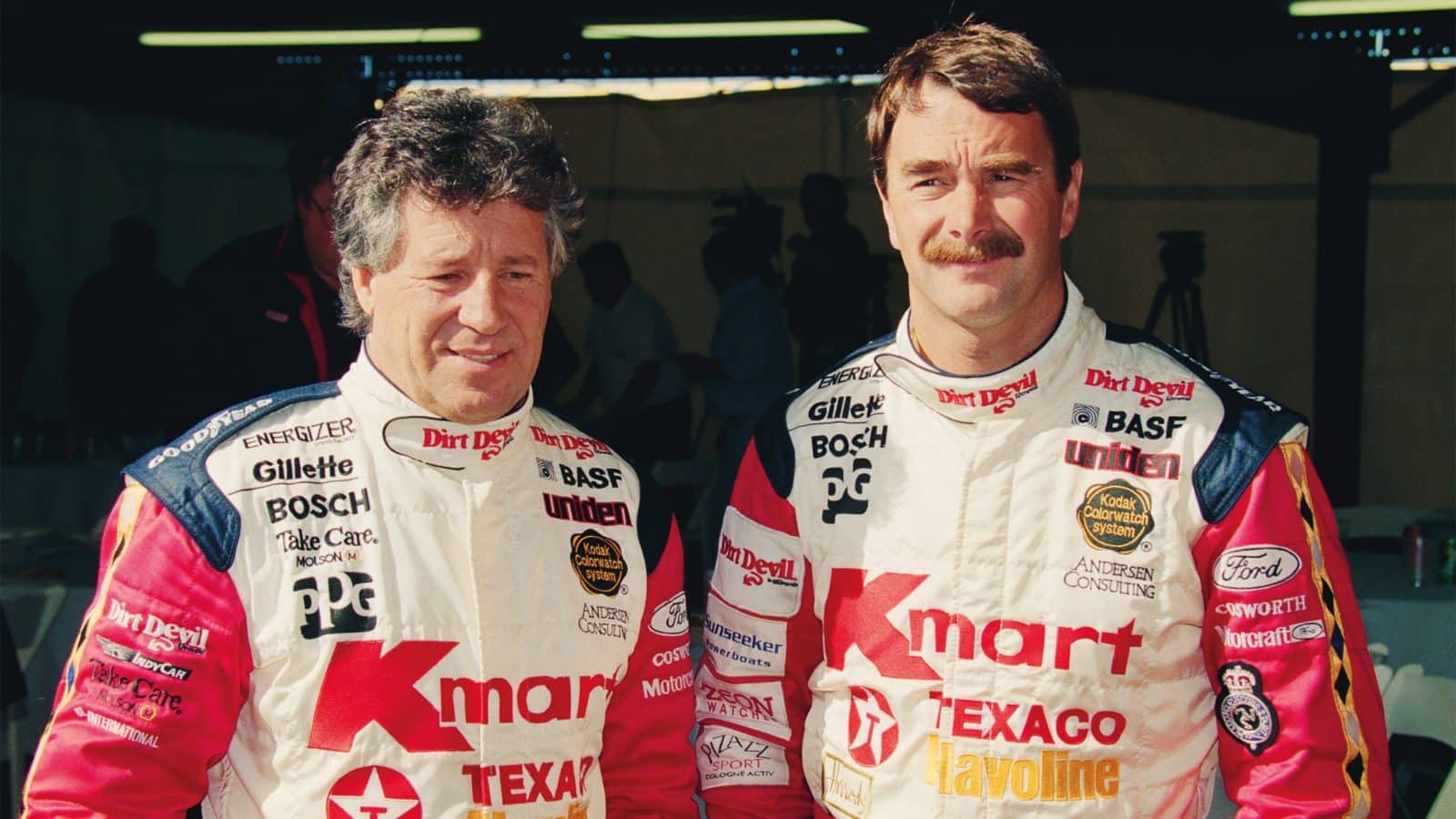
Getty Images
The traditional pre-season test at Phoenix International Raceway was usually a casual, under-the-radar affair – no fans to speak of, just a handful of photographers, sport writers and local reporters watching Indycars go round and round in the Arizona desert. But in January 1993, the press office at PIR was unexpectedly flooded with press credential requests. More than 70 media types from seven different countries showed up. All of them shared the same assignment – to chronicle every move and utterance of a rookie making his oval-track debut at the not-so-tender age of 39.
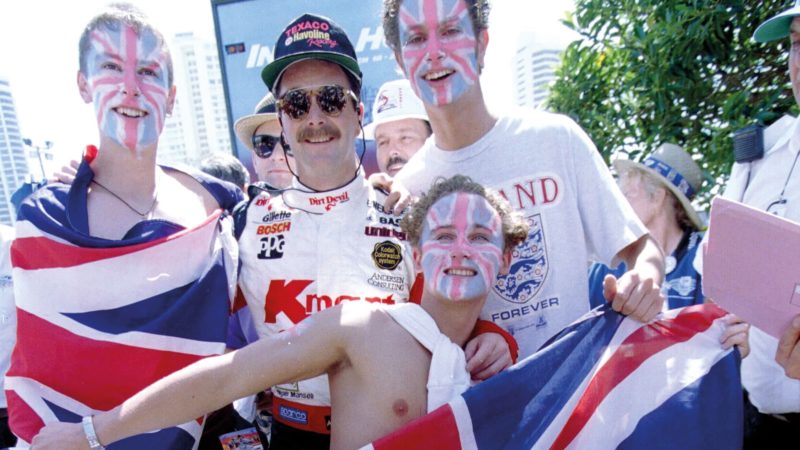
‘Our Nige’, the reigning F1 world champion, makes his IndyCar debut at Surfers Paradise, Australia in 1993.
The singular object of their attention was Nigel Mansell, fresh from winning the Formula 1 world championship with Williams and now seeking a new challenge with Newman/Haas Racing. As he watched photographers jostle for position around him, Carl Haas, the team’s cigar-chomping co-owner (with actor Paul Newman), leaned over to PR officer Michael Knight and whispered, “I think this is going to be bigger than we thought.”
Mansell-mania, the US edition, was go.
“I remember thinking that this is what it must have been like when Elvis was king”
After winning the first race of the CART season, at Surfers Paradise in Australia, Mansell rode with Knight on a golf buggy to Victory Lane. “Fans were standing on both sides of us, waving Union Jacks and chanting Nigel’s name,” Knight says. “And I remember thinking that this is what it must have been like when Elvis was king.”
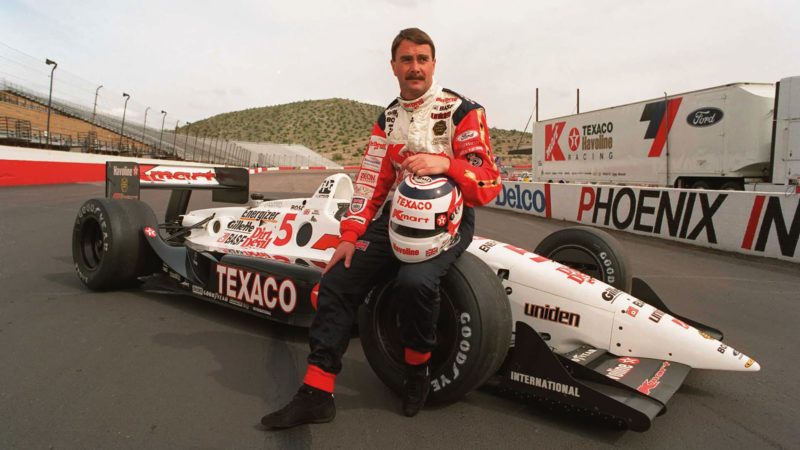
Mansell with his ‘Red 5’ Newman/Haas Lola
Getty Images
Mansell was a rock star in 1993, when he won five races, the adoration of thousands of fans and the PPG Indy Car World Series title. But if 1993 was what team mechanic Tim Coffeen called Camelot, the next year was a season in hell as the relationship between Mansell and team-mate Mario Andretti – himself a past Formula 1 and IndyCar champion – turned toxic and neither driver could compete with the Penske juggernaut. Although both Mansell and Andretti ran a few races after quitting Indycars, 1994 marked the end of their careers as front-line drivers.
The Nigel & Mario Show was the product of events that unfolded independently on either side of the Atlantic. In search of new worlds to conquer, Andretti’s son Michael, the quickest driver in Indycars, signed an F1 contract with McLaren.
Meanwhile, Mansell couldn’t come to terms with team owner Frank Williams after winning the world championship. Haas, looking to fill the vacancy left by Michael’s departure, flew to Monza to court Mansell. Newman sealed the deal by telling the frustrated Briton, “You’ve got to come on this Wild West adventure.”
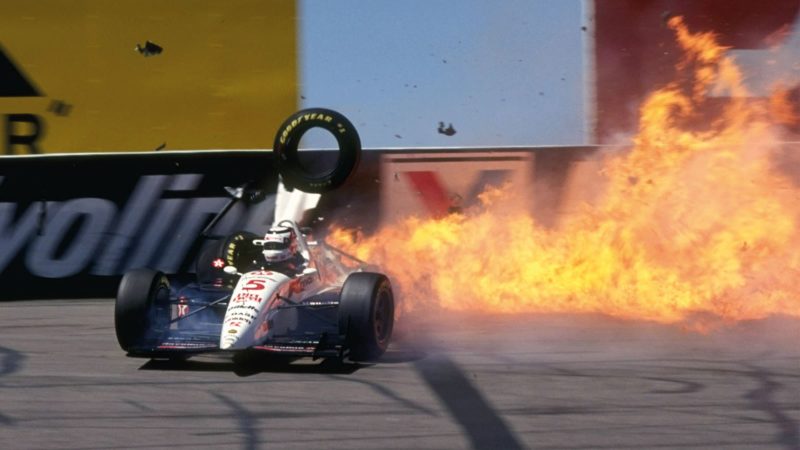
Flames at Phoenix in 1993 for Mansell but he’d be back behind the wheel two weeks later despite his injuries
Getty Images
The motor sport world was stunned and generally thrilled, with one notable exception – Mansell’s team-mate-to-be, Mario Andretti. In 1983, Andretti had brokered the marriage of Newman and Haas with the stipulation that the team be run as a single-car operation. Six years later, he agreed – “almost reluctantly”, he admits – to allow his son to join the team. But Mario remained so fiercely competitive that he raced Michael as hard as anybody.
Although the wounds he suffered during the Mansell years still fester, the passage of 40 years has given Andretti a mellower perspective on the decision to bring in an outsider. “I understand it now. Business-wise and from a team standpoint, it made sense,” he tells me. “But all of a sudden Nigel was the preferred driver. I felt like it was a little bit unfair.”
“Mansell had developed a notorious reputation for whingeing, histrionics and political infighting”
During his years in Europe, the thin-skinned Mansell had developed a notorious reputation for whingeing, histrionics and political infighting. The crew wasn’t sure what to make of him when he arrived at the Newman/Haas shop for his seat fitting wearing an alpaca cardigan and tie. “Do you race with a tie on?” crew chief Tom Wurtz asked him, giving him the needle. Whereupon Mansell jokingly grabbed Wurtz in a headlock and half pulled him down into the cockpit.
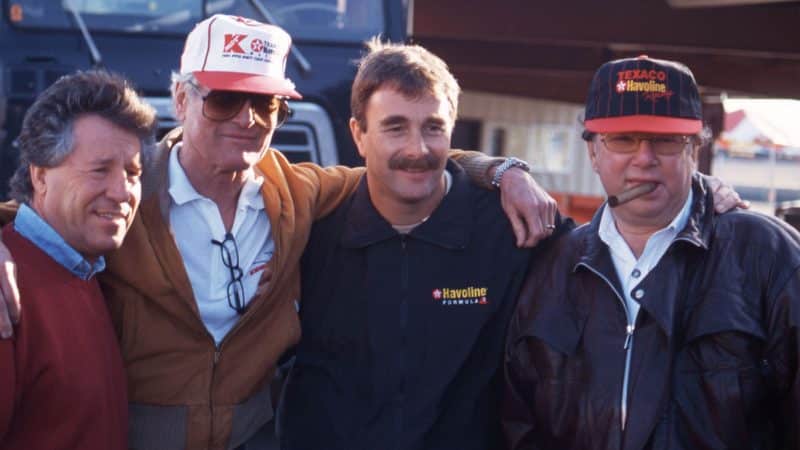
From left: Mario Andretti, Paul Newman, Mansell and cigar-chomping Carl Haas
Getty Images
“Nigel had personality,” Wurtz says. “He was bubbly. He was energetic. He was a fun-loving guy who made everybody feel good.” Team manager Jim McGee, who’d been an assistant to chief mechanic Clint Brawner when Brawner tapped a young charger named Mario Andretti to drive the Dean Van Lines Indycar in 1964, was another Mansell fan. “Working with Nigel was the most pleasant experience I’ve ever had with a driver,” McGee admits. “He was a gentleman, and he motivated the whole team.”
Although Mario was a favourite of fans and the media, he was all business with the crew. Michael, young and less confident than his father, had been shy and distant, more hired gun than team player. Mansell, whether by design (Mario’s contention) or by instinct, made all the right moves to bond with his crew, from making friendly conversation to buying the guys leather jackets emblazoned with the red No5 his cars had worn at Williams and Newman/Haas.
At test sessions, Wurtz recalls, when changes had to be made, Mansell would ask him how long the work would take. “If I told him it would take an hour and a half, he’d tell me, ‘I’ll give you $500 if you can do it in an hour,’” Wurtz says. “So I’d talk it over with the guys, and they’d agree. And he’d give us the money even if it took us an hour and a quarter.”
But the overriding reason the crew gelled behind Mansell was that he exhibited the quality that racers prize more highly than any other: he could wheel a car like nobody’s business.
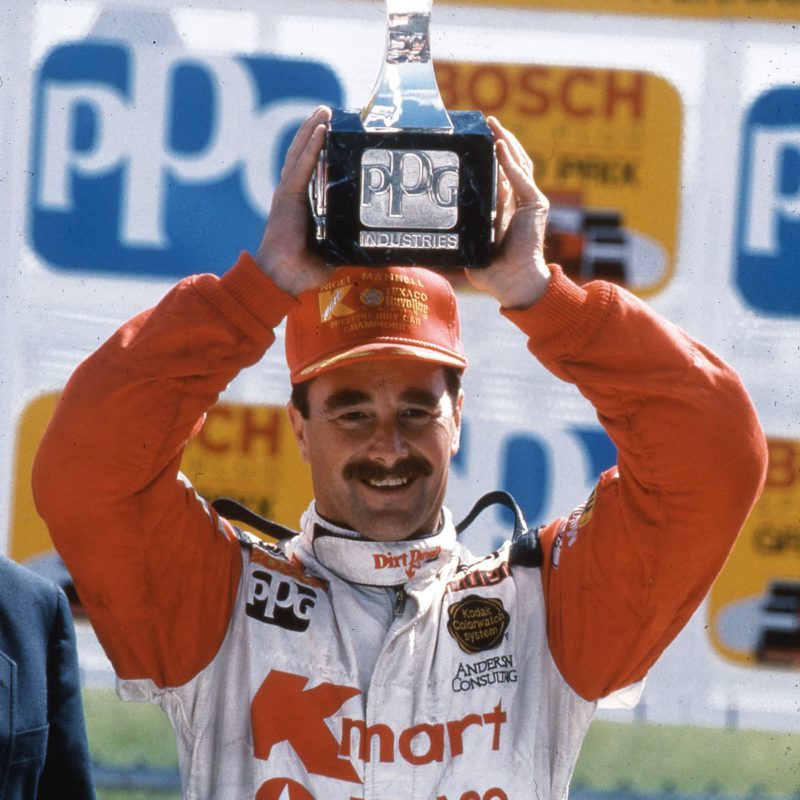
It was the Brit’s fifth win of ’93
“He’d tell you what he was going to do, and you’d go, ‘Really?’” McGee says. “But then he’d go out and do it. His driving was enough to motivate you. He was hard on the gas all the time.”
In the opening race of the season, Mansell qualified on pole in Australia and set the fastest lap en route to beating two-time F1 world champion Emerson Fittipaldi to the chequered flag. But speculation that Mansell could walk on water exploded two weeks later on the daunting one-mile oval at Phoenix. Running a high line despite McGee’s advice, Mansell was quickest in practice – until he lost control in Turn 1 and backed his Lola into the wall at 187mph. Besides knocking Mansell unconscious, the collision put a hole in the 5in-thick concrete barrier. “My God!” a crewman said. “You can see that [fan’s] legs through the wall!”
Mansell wasn’t permitted to race. In a storybook finish, Andretti scored an immensely popular victory after Paul Tracy crashed while leading. “It was a bit of a gift,” Andretti says. But considering how many races he lost over the years through mechanical misfortune – the phrase “Andretti is slowing” was a previous generation’s version of a meme – Andretti deserved a break. And, as he puts it, “A win is a win.” This one, his 52nd in Indycars, would be his last in major-league competition.
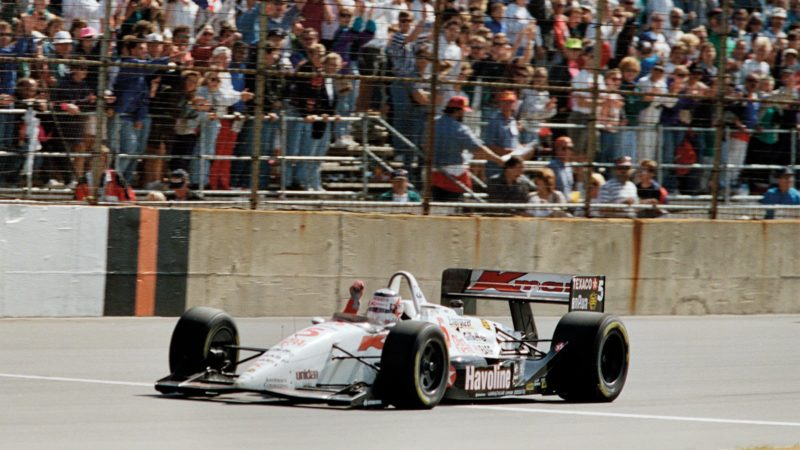
Union Jacks on show at Nazareth Speedway, Pennsylvania as Mansell clinches the IndyCar title at his first attempt.
Mansell was hurt more badly at Phoenix than he let on at the time. “I got back in the car way before I should have and did a lot of races with a lot of anaesthetic in my back,” he told me several years ago when I was co-writing a book about Newman. Between medical sessions to drain fluid that pooled painfully in a rupture in his back, Mansell qualified on pole position at Long Beach before fading to third.
Both Newman/Haas cars were fast during the Indianapolis 500. Andretti led more laps than any other driver but was sabotaged when the crew ignored his instructions and changed the tyre stagger without telling him during a late pitstop. “I’m leading the race, and I go into Turn 2 and almost went straight into the wall,” he says. Hampered by understeer, he finished fifth.
“Much to the surprise of IndyCar veterans, Mansell was at his best on the ovals”
Mansell, meanwhile, was at the front of the field when the track went green with 15 laps to go. But he got snookered on the restart, and Fittipaldi and Arie Luyendyk blew past. Trying to claw back the lead, Mansell kissed the barrier on the exit of Turn 1. “Oh, I just tapped the wall,” he said calmly over the radio. Then, while the crew was holding its collective breath, he added, “Everything seems to be OK.” The throttle trace later showed that he never lifted.
Much to the surprise of IndyCar veterans, Mansell was at his best on the ovals, not the road courses. McGee hypothesised that his F1 experience allowed him to use an unusual technique to carry more speed down to the apex. “He would free up the car by giving it a little pitch in the middle of the corner and then he’d come off the corner straight,” he says. “He was able to get the car turned without scrubbing off any speed. His style was a lot like Rick Mears.”
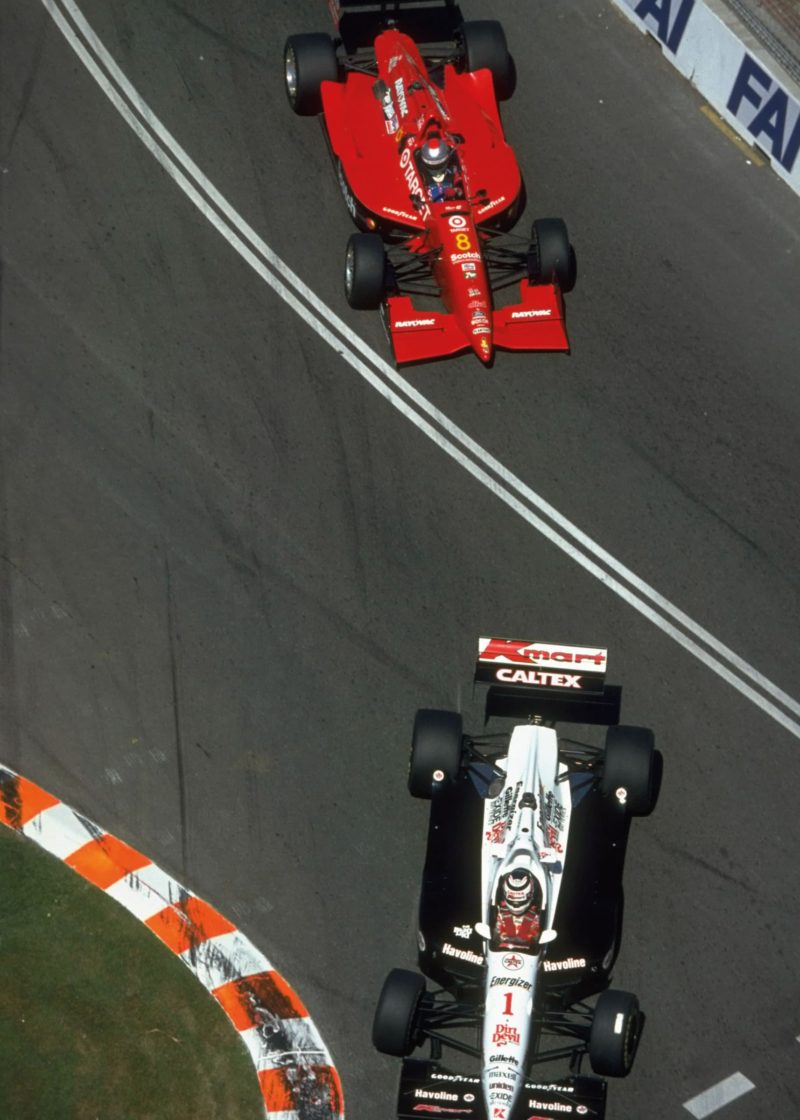
Mansell leads Michael Andretti at the 1994 IndyCar opener at Surfers Paradise, but Michael would win on his Ganassi debut
Getty Images
A week after Indy, on the flat one-mile oval at Milwaukee, Andretti outqualified Mansell. But Mansell learned on the job, scything through the field until sweeping into the lead late in the race and winning by less than a second. At the next oval, the mildly banked Michigan International Speedway, Andretti scored his final pole (at 234.275mph!), with Mansell qualifying second. But they swapped positions during the race, giving Newman/Haas a 1-2 finish.
The one-mile bullring at Loudon, New Hampshire, was the site of Mansell’s finest hour. In a spectacular race full of epic slicing and dicing, Mansell lost a bunch of positions after a disastrous pitstop. “No worries, lads,” Mansell radioed. “We will make it up on the track.” And he did. With four laps to go, he elbowed his way past Tracy for the win on his 40th birthday. Later that year, in the penultimate race of 1993, Mansell clinched the CART title with a magisterial victory from pole on yet another oval, at Nazareth, Pennsylvania, Andretti’s home turf.
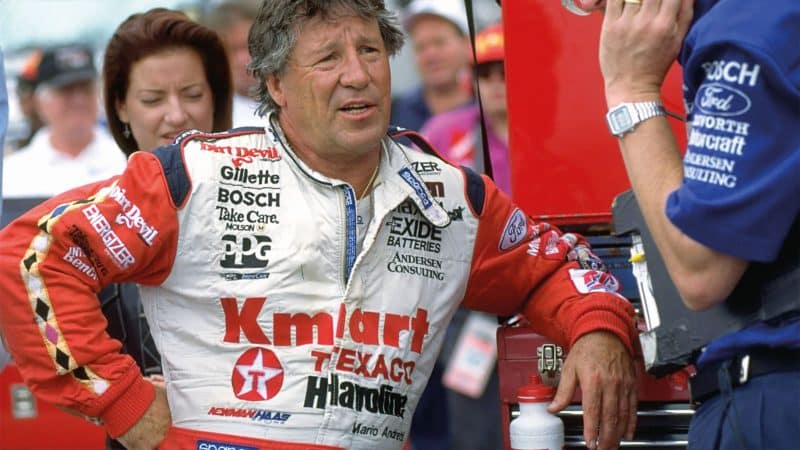
Andretti was well into his 50s when Mansell joined him in IndyCars.
Getty images
While Mansell celebrated, Andretti stewed. Getting beaten by a rookie was bad enough. Andretti also didn’t get along with his team-mate. Andretti came from the AJ Foyt/Parnelli Jones school of tough-guy stoicism. Mansell, on the other hand, always seemed to be limping, wincing or falling utterly exhausted out of his car. “Some of it might have been a bit theatrical,” Wurtz says. “But he was a showman, and he knew how to attract fans.”
Andretti also didn’t appreciate what he saw as the calculated way Mansell had charmed the team, and he was convinced that his team-mate was benefiting from development upgrades before he got them. “It was ugly,” Coffeen recalls. “There were tough feelings between the drivers, and it spilled over to the crews.”
Newman was torn between his professional respect for Mansell and his personal friendship with Andretti. As Andretti recalls, “Paul came to me a couple of times and said, ‘Why can’t you two get along?’ I said, ‘It takes two. He’s a tremendous talent, no question, but he’s totally divided the team. We used to be able to sit down after practice and discuss things. But he looks at my worksheets and I can’t look at his. When he wins a race, he buys gifts for my mechanics. That’s all underhanded stuff. How the hell can I get along with a guy like that?’”
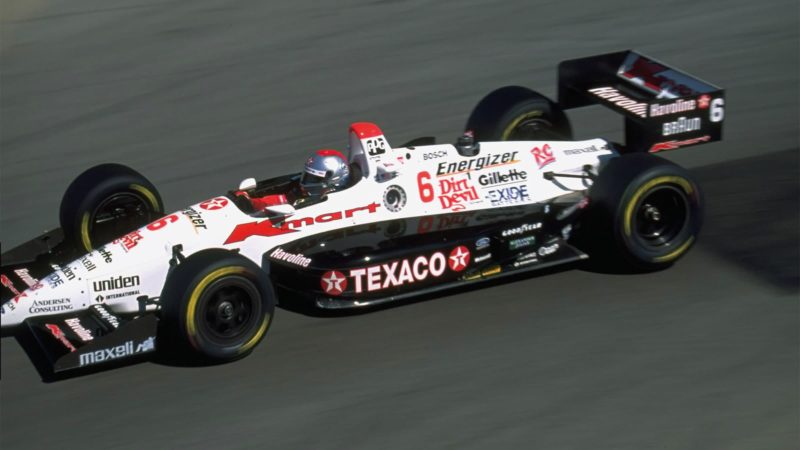
Mario’s final IndyCar outing, Laguna Seca, 1994.
Getty Images
But Andretti had been around long enough to know the score. As long as Mansell was winning races, he’d be the number one driver. With Mansell as the centrepiece of the team, Andretti foresaw a future of diminishing returns. “I was 54 years old,” he says, “and I didn’t want to overstay.” So he announced that he would retire at the end of the next season.
Mansell declined to be interviewed for this story. When I spoke with him nearly a decade ago, he had almost nothing to say about Andretti. He followed the same pattern in Mansell: My Autobiography in 1995, written with James Allen. Mansell used the book to settle scores with rivals ranging from Nelson Piquet and Alain Prost to media types who covered him in Formula Ford. But hardly a word, good or bad, was written about Andretti. Draw your own conclusions.
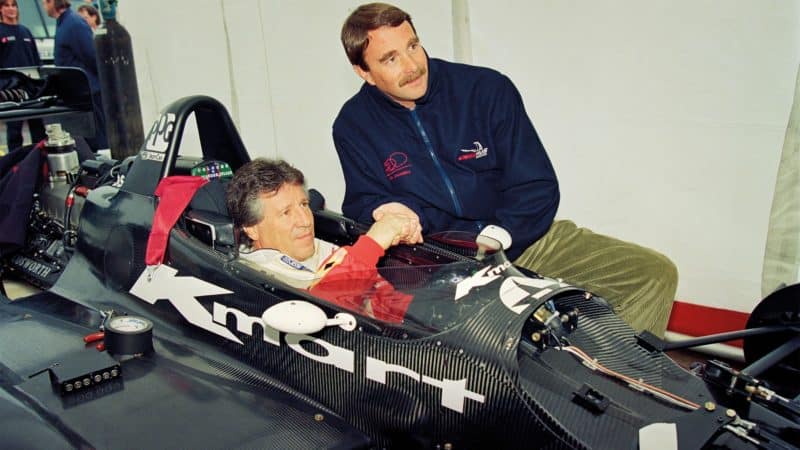
Partners at ’93 testing, Phoenix
Getty Images
Although Newman/Haas went into the new year with high expectations, the season went south almost immediately. The Lola T94/00 was outclassed by the Penske PC23, which won 12 of 16 races, while Michael Andretti – back in CART after his calamitous sojourn in F1 – won twice in the brand-new Reynard. Newman/Haas failed to score a single victory for the first time in its history. The team bottomed out at Loudon, where Mansell and Andretti touched wheels, sending Mario into the fence.
“Nigel didn’t feel like he wanted to continue, so he balled out. It left a very bad taste”
In defeat, Andretti contends, Mansell revealed his true colours as a frontrunner with no stomach for fighting the good fight. By mid-season, there was a sense that he was just mailing it in. “When things started going not so well for him, he started trashing the team,” Andretti says. “Nigel didn’t feel like he wanted to continue [in Indycars], so he bailed out. It left a very bad taste.”
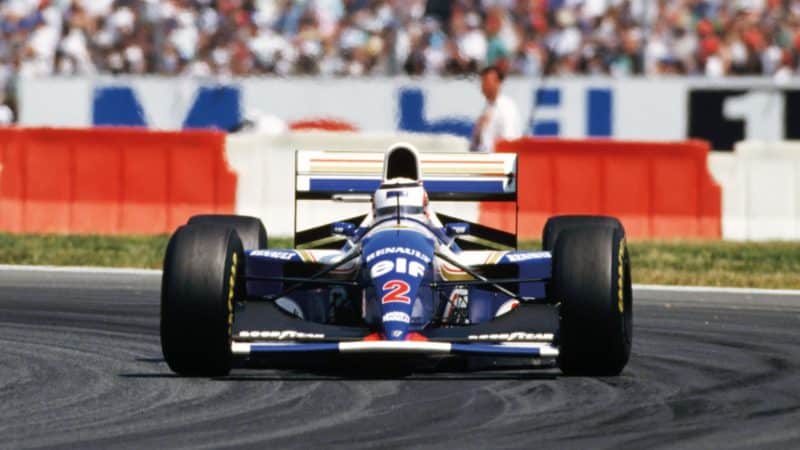
Mansell returned to F1 in 1994.
Getty Images
Wurtz insists that Mansell never stopped trying hard in the Newman/Haas car. But he acknowledges that off-track developments started to take a toll.
“The atmosphere changed radically,” Wurtz recalls. “There was talk on the shop floor that Formula 1 wanted Nigel back. At a certain point, I guess he thought, ‘Carl and Mario don’t want me, so what am I doing here?’ It was sad for us because we had been looking forward to a couple more years racing with Nigel.”
After the death of Ayrton Senna at Imola, Bernie Ecclestone was eager to bring Mansell back into the F1 fold, even if it meant paying a lot of money to “unravel” – Mansell’s word – contracts with Newman/Haas. Mansell ran a one-off grand prix for Williams in France in June, and after the IndyCar season ended, he did three more races for his old team, inheriting a win in Australia when Michael Schumacher drove into Damon Hill to secure his first championship.
Despite being fêted repeatedly during his “Arrivederci, Mario!” tour, Andretti suffered through a miserable season, failing to lead a single lap and posting DNFs in half of his races. But nobody accused him of pulling the ripcord. As Coffeen says, “I never saw Mario Andretti in a race car when he didn’t have that fire in his eyes.”
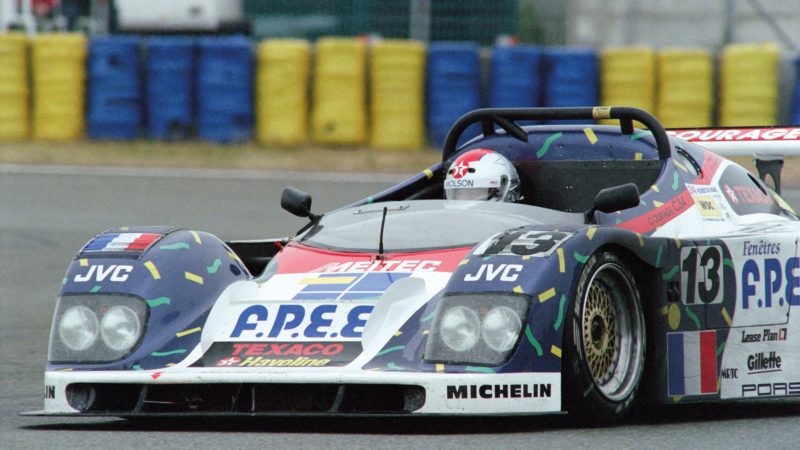
Le Mans ‘winner’ Mario in ’95.
Getty Images
At Laguna Seca, on the first lap of his final IndyCar race, Andretti dropped to the tail end of the pack with a flat tyre. Driving with his signature tenacity on a tight track with limited passing opportunities, he fought his way up back to seventh – lapping Mansell’s ailing Lola along the way. “But with four laps to go, the fricking engine broke,” he says, still sounding annoyed.
Mansell signed with McLaren in 1995. But instead of a triumphant return, he endured the embarrassment of missing the first two events of the season because he couldn’t fit inside the cockpit of the MP4/10B. Then, after two uncompetitive races, he quit Formula 1. The final professional race of his career was at Le Mans in 2010, where he competed with his sons, Greg and Leo, but the outing ended badly with a heavy crash on his fifth lap.
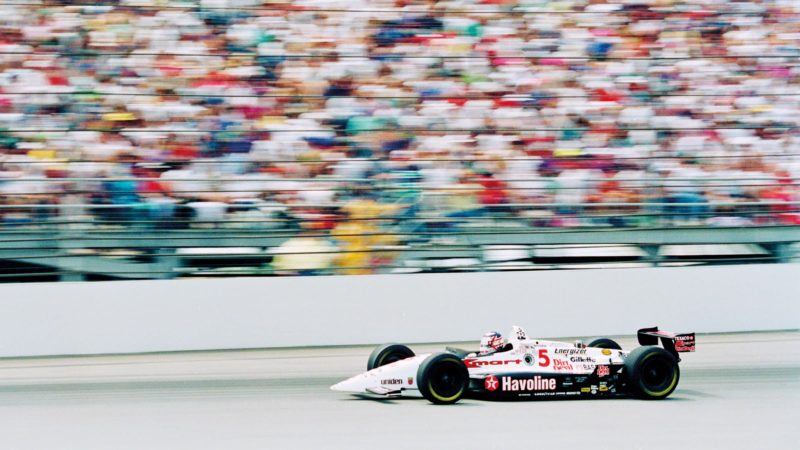
Mansell at the 1993 Indy 500
Getty Images
Andretti, too, chased victory at Le Mans, making four appearances there after retiring from Indycars. In 1995, he, Bob Wollek and Éric Hélary came up three minutes short in a Courage C34 WSC car. “We finished second overall, but we were first in class, and if you win a class, you can declare yourself a winner, right?” he says, daring me to disagree. “I hear people say over and over, ‘He never won Le Mans.’ Well, I did win Le Mans. I won in class. And that’s a fact.”
Mansell and Andretti were undoubtedly oil and water. But they shared two traits in common – an absolute faith in their own ability and a fervent belief that, all things being equal, they never ran a race they shouldn’t have won. That’s what made their pairing in 1993 and 1994 so combustible and entertaining. Two lions in winter, brawling until the bitter end.




























































































































































